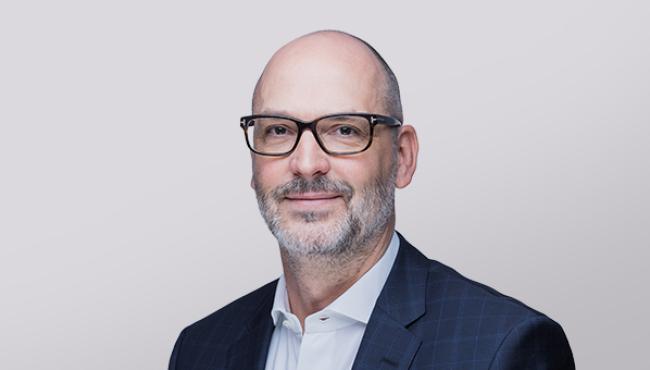
Operational Excellence
Our relentless pursuit of sustainable improvements or why variation is the antagonist for continuous production processes. With more than 270 successful Operational Excellence projects globally, AFRY's Bioindustry Operations is more eager than ever to support our partners and clients to improve their bottom line results in an integrative manner and in the long run.
We are still waiting for Phoenix to rise
What we see, especially in Europe and North America, is a continued market decline and constant over capacities in certain paper markets/products, combined with high material costs not compensated for by higher selling prices. Looking into other industries, the production dilemma is not getting smaller/any different but rather fueled by the crippled global supply chains still for months to come. A gloomy outlook into the future, after all.
Tight pockets and high expectations
With most companies being in the cost-cutting mode – which is fine and a needed thing – why not get the best out of what you already have? In an era where capital expenditures are rather tight, getting the best out of your assets becomes even more important than it ever was. Securing the value of your investments and driving performance to world-class levels. Contemplating about the market conditions, bad negotiating power with suppliers, unfair competition – all that doesn’t help. Let’s focus on what we can drive internally once it's identified, quantified and price tagged.
Measure only what you can control
“Not everything that counts can be counted and not everything that can be counted counts” – is a quote Albert Einstein had hanging in his office in Princeton, originated by William Bruce Cameron. We might add – not everything that counts is getting counted. We see quite often in companies that a huge array of KPIs is created – just because supporting IT systems enable us to do so – and at the same moment, everyone in the company is getting confronted with them. Surprisingly enough, everyone with the same ones. So, in one blink of a second, an operator gets the same KPIs as the MD, although he is far from being able to control most of them.
Get a grip on your productivity – and we mean a real grip on the real facts of productivity, not the obvious and misinterpreted ones
What matters, in fact, in the long haul is productivity. It’s about the only thing that matters. How are you going to cut costs so your annual profit stays the same or hopefully gets bigger? There are not that many options. The assets are already there, and they are depreciated every year. Input materials are negotiated and dependent on your suppliers. The staff is in place, and it consists of well-selected specialists. In order to increase profit, productivity from the given assets needs to increase. By increasing productivity, you get more output from the same resources; hence profitability will rise regardless. When productivity stalls, your march of progress comes to a halt. With higher productivity, you can outshine your competitors, regardless of the sector you are in, and it will be instrumental for your growth. But how to get there?
Productivity, getting more output from a given set of inputs, is, in fact, a noble calling. At the same time, as important as it is, it’s very often not well understood. Usual reactions on the call for enhanced productivity are either cutting down the headcount, increasing automation, efficiency or implementing IT systems. Well, let’s see what the downside of this approach might be.
Cutting down the headcount is indeed a measure to reduce costs in the mid-run, but it’s not increasing productivity. The savings don’t come easily since there are upfront social payments, plus the team spirit and morale get tested quite heavily. Ultimately, the processes don’t get changed.
Increasing the level of automation, and hence theoretically producing more cleverly, might do the trick if it wasn’t for the required investments needed. Efficiency increases, often expressed as machine utilisation or labour efficiency, do not tell you enough about true value creation in your processes and the unsolved problem of bottlenecks in your production lines that will still prevent increased overall productivity.
IT systems are definitely a great helper in today’s ever-increasing complexity. Experience shows that costs are always higher than expected, and timelines are hard to keep, not to mention the long project duration. The result of those efforts is, unfortunately, very often suboptimisation. But what to focus on then, if not on those classic items, very often also preached loud and proud by a lot of consultants who simply don’t know it any better? The solution is simpler than you might have thought.
Focus on the right things
The focus needs to be on reducing throughput time and variation. Bottom line. That’s what matters, that’s what brings you productivity and hence money. Forget focusing on who is doing the work, production factors and accountant-trimmed figures. You need to make the flow of production, either material or information, as fast as possible with as little variation as possible. Variation includes time, quality and, of course, quantity. Bearing that in mind, you need capable and committed shop floor workers that actually drive the processes and proper support of true performance indicators supporting the efforts.
Where will that get you?
Consequently, possible sources of waste will cease to exist. Overproduction, waiting time, unnecessary transportation, process steps, inappropriate inventories, motion and defects will be reduced as well. The same will happen to inventories and bottlenecks.
Reducing throughput time does not necessarily mean running the machines at their maximum speed or capacity. This might result in quality problems, scrapped production and rework. What it means, in fact, is to reduce waiting time and to rationalise the flow so that it ultimately takes you as little time as possible to move from one value-adding step to another.
Certainly, all of this is easier said than done. But knowing where to look at and how to deal with it helps getting started and geared towards the right targets.
Here is how we can help you get your business on track
Our recent project portfolio yielded savings in the range of 19.- to 54.- euros per ton of product in the high-volume, low-margin Pulp and Paper industry. Applying that to the average site production in, e.g. North America with an app. 213,800 t/a, this would lead to savings in the range between 3.2 and 8.1 million Euros. Just playing with the numbers – applying our lowest saving levels per ton achieved in our projects on the global paper and board production, the saving potential out there would be 12 billion Euros minimum – with the lowest savings we ever encountered in one of our projects. But let’s not go there entirely…
Being generic is not our thing – and neither should it be yours
While most consulting competitors mainly are applying generic cost-cutting methodologies without giving a profound indication of where it’s best done, we focus on quite the opposite of this approach. We have illustrated in many cases that we dive deep into the very details of the processes, analyzing the data for detailed variability, throughput and quality and drawing precise conclusions from that.
Speaking with the voice of the customer, truly understanding their business and providing essential technical expertise in a unique combination with world-class management systems.
Unlocking the value that is hidden in the given assets and reshaping the focus to the business essentials. Rethinking process paradigms and long-year routines.
Driving for true collaboration across shifts, teams and sites
How to bring empowerment to real life – include operators not only in the discussion but let them also discuss what’s important in the daily processes. Managers can actually learn quite a lot from those discussions, having operators from different but connected areas within a plan at one table discussion on performance, quality, and throughput – you will be surprised by the depth of these discussions.
And it doesn’t stop with production, just on the opposite. It’s only the beginning. Even higher gains can be yielded when looking into sales as one example. Introducing the right mindset there combined with seamless integration with the whole supply chain geared towards productivity, applying stringent control on the financial and cash management together with tight bonuses and special offer regulations… oh boy, that’s where the money lies…
Our approach to operational excellence is embossed as a mindset rather than a methodology. We are relentlessly pursuing ways to improve the way our clients work and make money, and we are geared towards boosting their performance in a sustainable manner.
Looking into the industry development, especially bearing in mind that money to be invested should still be rather tight due to declining profits, it’s quite astonishing why was not more emphasis given on productive change, but rather on technical change. Undoubtedly, significant leaps can be done with investments, but still, the question remains – do you get the best possible performance out of your existing assets?



